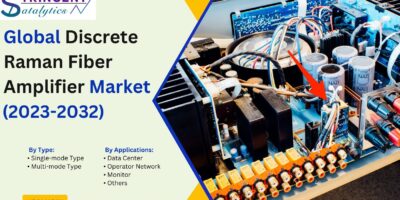O-RAN Hardware Market Overview
The O-RAN (Open Radio Access Network) hardware market is transforming the telecommunications landscape by promoting open standards and interoperability for radio access networks. This market enables the deployment of modular, flexible, and scalable network infrastructure, fostering innovation and reducing dependency on proprietary solutions from single vendors.
Enhanced Manufacturing Efficiency:
- Standardized Designs:
- Adoption of standardized O-RAN hardware designs reduces complexity in manufacturing, enabling streamlined production processes.
- Modular Components:
- Modular hardware components such as Radio Units (RUs), Distributed Units (DUs), and Centralized Units (CUs) allow for efficient assembly and customization based on network requirements.
- Automated Production:
- Implementation of advanced automation and robotics in production lines enhances precision, consistency, and output rates.
- Lean Manufacturing:
- Lean manufacturing principles minimize waste, improve resource utilization, and optimize the production workflow.
- Efficient Supply Chain Management:
- Integrated supply chain management ensures timely procurement of components, reducing lead times and inventory costs.
- Quality Assurance Systems:
- Comprehensive quality control and testing procedures maintain high standards and reduce defect rates, ensuring reliable hardware performance.
Cost Effectiveness:
- Reduced Capital Expenditures:
- Utilization of open and interoperable hardware components lowers capital costs by eliminating reliance on proprietary systems.
- Competitive Pricing:
- Open standards foster a competitive marketplace, allowing operators to choose from multiple vendors and negotiate better pricing.
- Lower Operational Costs:
- Virtualization and software-defined operations reduce the need for specialized hardware, lowering operational and maintenance expenses.
- Scalability Benefits:
- Modular hardware allows for cost-effective scalability, enabling operators to expand or upgrade networks incrementally without significant investment.
- Optimized Resource Allocation:
- Efficient resource allocation and reduced hardware redundancy contribute to overall cost savings in network deployment and management.
- Decreased Power Consumption:
- Advances in hardware efficiency reduce power consumption, leading to lower energy costs and operational expenditures.
Environmental Sustainability:
- Eco-Friendly Materials:
- Use of sustainable and recyclable materials in O-RAN hardware production reduces environmental impact and supports green initiatives.
- Energy Efficiency:
- Design optimizations and energy-efficient components lower power consumption, reducing the carbon footprint of network operations.
- Modular Design:
- Modular hardware reduces waste by allowing only necessary components to be upgraded or replaced, minimizing electronic waste.
- Reduced Physical Footprint:
- Compact and efficient hardware designs require less space, contributing to reduced land and material use in network infrastructure.
- Lifecycle Management:
- Implementation of end-of-life recycling programs for obsolete hardware promotes responsible disposal and resource recovery.
- Compliance with Environmental Standards:
- Adherence to environmental regulations and standards ensures sustainable manufacturing and operational practices.
Advanced Formulations and Technologies:
- Integration of Advanced Semiconductors:
- Use of cutting-edge semiconductor technologies enhances processing power, efficiency, and performance of O-RAN hardware.
- AI-Driven Network Optimization:
- Incorporation of AI and machine learning algorithms for network optimization and automated management improves efficiency and performance.
- Advanced Antenna Technologies:
- Deployment of sophisticated antenna technologies like massive MIMO and beamforming improves signal quality and network coverage.
- Virtualization and Cloud Integration:
- Support for virtualization and cloud-based management enables flexible and scalable network functions on generic hardware.
- High-Performance RF Components:
- Utilization of advanced RF components enhances the ability to manage complex radio frequencies and improve signal integrity.
- Enhanced Security Features:
- Integration of robust security measures and encryption protocols ensures data integrity and protection against cyber threats.
Receive the FREE Sample Report of O-RAN Hardware Market Research Insights @ https://stringentdatalytics.com/sample-request/o-ran-hardware-market/9957/
Market Segmentations:
Global O-RAN Hardware Market: By Company
• Fujitsu
• NXP Semiconductors
• Baicells
• Benetel
• Comba
• KMW
• MTI
• NEC
• NTS
• Xilinx
• Mavenir
• Qualcomm
• GigaTera
Global O-RAN Hardware Market: By Type
• Radio Unit (RU)
• Distributed Unit (DU)
• Central Unit (CU)
Global O-RAN Hardware Market: By Application
• Small Base Station
• Macro Base Station
Regional Analysis of Global O-RAN Hardware Market
All the regional segmentation has been studied based on recent and future trends, and the market is forecasted throughout the prediction period. The countries covered in the regional analysis of the Global O-RAN Hardware market report are U.S., Canada, and Mexico in North America, Germany, France, U.K., Russia, Italy, Spain, Turkey, Netherlands, Switzerland, Belgium, and Rest of Europe in Europe, Singapore, Malaysia, Australia, Thailand, Indonesia, Philippines, China, Japan, India, South Korea, Rest of Asia-Pacific (APAC) in the Asia-Pacific (APAC), Saudi Arabia, U.A.E, South Africa, Egypt, Israel, Rest of Middle East and Africa (MEA) as a part of Middle East and Africa (MEA), and Argentina, Brazil, and Rest of South America as part of South America.
Click to Purchase O-RAN Hardware Market Research Report @ https://stringentdatalytics.com/purchase/o-ran-hardware-market/9957/
Working:
- Disaggregated Network Components:
- O-RAN hardware separates traditional RAN functions into modular components such as the Radio Unit (RU), Distributed Unit (DU), and Centralized Unit (CU), allowing flexible deployment and independent upgrades.
- Open Interfaces:
- Utilizes open, standardized interfaces (like Open Fronthaul and Open Midhaul) to ensure interoperability between hardware from different vendors, facilitating a multi-vendor ecosystem.
- Software-Defined Functions:
- Integrates with software-defined radio access networks (RAN), allowing dynamic control and optimization of network functions via software, reducing dependence on proprietary hardware solutions.
- Virtualization Support:
- Supports network function virtualization (NFV) to run RAN functions on general-purpose hardware, enabling scalable and efficient deployment of network resources.
- Advanced Antenna Technologies:
- Employs technologies such as massive MIMO (Multiple Input Multiple Output) and beamforming in RUs to enhance network capacity, coverage, and spectral efficiency.
- Centralized Management:
- Centralized management and orchestration platforms provide real-time monitoring, automated network optimization, and management of O-RAN components, improving overall network performance.
Reasons to Purchase:
- Cost Reduction:
- Minimize capital and operational expenditures by leveraging open standards and interoperable hardware, reducing reliance on single-vendor solutions.
- Vendor Flexibility:
- Enable a flexible, multi-vendor approach allowing the selection of best-of-breed hardware, avoiding vendor lock-in and fostering competitive pricing.
- Scalability and Flexibility:
- Achieve scalable network deployment through modular components, facilitating easy upgrades and expansion as network demands grow.
- Rapid Innovation:
- Stay at the forefront of technology with the ability to quickly adopt new hardware innovations and integrate them into the existing network infrastructure.
- Enhanced Network Performance:
- Improve network efficiency and performance with advanced technologies and dynamic software controls, ensuring superior user experiences.
- Compliance and Standards:
- Ensure compliance with emerging O-RAN standards and industry requirements, preparing the network for future developments and regulatory changes.
Key Report Highlights:
- Market Size and Growth Projections:
- Detailed analysis of the current market size, growth rate, and future projections for the O-RAN hardware market, identifying key growth areas and opportunities.
- Technological Trends:
- Insights into the latest technological advancements in O-RAN hardware, including developments in open interfaces, virtualization, and antenna technologies.
- Competitive Landscape:
- Comprehensive overview of the competitive landscape, including profiles of leading vendors, their market strategies, and product offerings.
- Regional Analysis:
- Examination of regional market dynamics, identifying key markets, regulatory environments, and factors driving growth in different geographies.
- Challenges and Opportunities:
- Identification of key challenges facing the O-RAN hardware market, such as integration issues and standardization hurdles, along with emerging opportunities for market expansion.
- Future Outlook:
- Forecasts for the future development of the O-RAN hardware market, including potential impacts of new technologies, market trends, and evolving industry standards.
About Stringent Datalytics
Stringent Datalytics offers both custom and syndicated market research reports. Custom market research reports are tailored to a specific client’s needs and requirements. These reports provide unique insights into a particular industry or market segment and can help businesses make informed decisions about their strategies and operations.
Syndicated market research reports, on the other hand, are pre-existing reports that are available for purchase by multiple clients. These reports are often produced on a regular basis, such as annually or quarterly, and cover a broad range of industries and market segments. Syndicated reports provide clients with insights into industry trends, market sizes, and competitive landscapes. By offering both custom and syndicated reports, Stringent Datalytics can provide clients with a range of market research solutions that can be customized to their specific needs.
Reach US
Stringent Datalytics
+1 346 666 6655
Social Channels:
Linkedin | Facebook | Twitter | YouTube




Leave a Reply